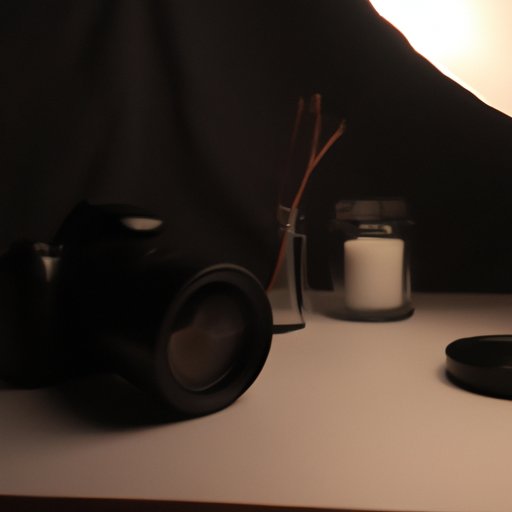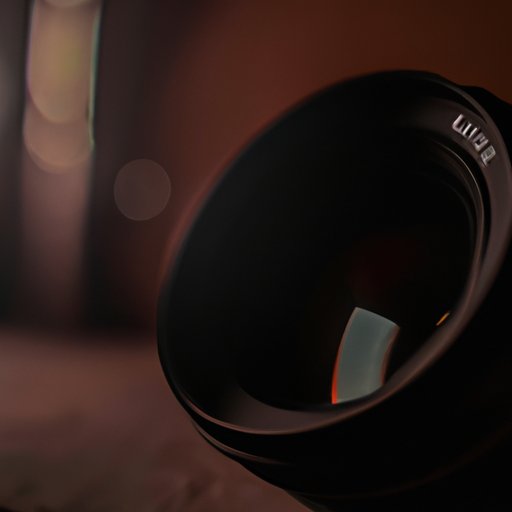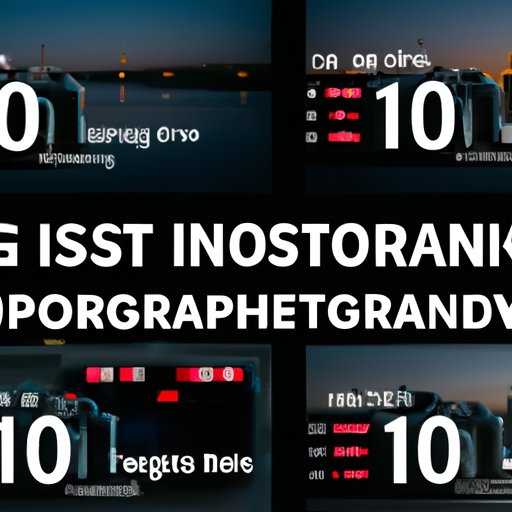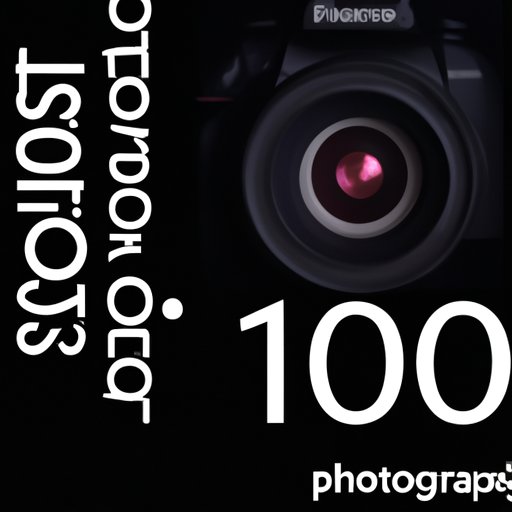Introduction
Photography is an art form that requires a deep understanding of the elements that make up a great shot. One of these elements is ISO, which stands for International Organization for Standardization. In photography, ISO is a measurement of the sensitivity of your camera’s image sensor to light.
ISO plays a critical role in digital photography as it determines your camera’s exposure and the overall quality of your photos. By understanding the basics of ISO and learning how to use it effectively, you can take your photography skills to the next level and create stunning images.

Exploring the Basics of ISO in Photography
Before diving into the details of ISO, let’s take a look at what it is and how it affects your photos.
What is ISO?
ISO is a measure of the sensitivity of your camera’s image sensor to light. The higher the ISO value, the more sensitive your camera is to light, and the brighter your photos will be. Conversely, the lower the ISO value, the less sensitive your camera is to light, and the darker your photos will be.
How ISO Affects Exposure and Quality in Photography
ISO has a direct impact on your exposure and the overall quality of your photos. When you increase the ISO, you are making your camera more sensitive to light, which allows you to take brighter photos even in low light situations. However, increasing the ISO also increases the amount of noise or graininess in your photos, which can reduce the overall quality of the image.
On the other hand, when you decrease the ISO, you are making your camera less sensitive to light, which allows you to take darker photos. This can be useful in bright conditions where you want to reduce the amount of light entering your camera. Lowering the ISO also reduces the amount of noise in your photos, resulting in higher quality images.
A Beginner’s Guide to ISO in Photography
Now that you have a better understanding of what ISO is and how it affects your photos, let’s take a look at how to use it for the best possible results.
Setting the ISO
Most modern digital cameras allow you to set the ISO manually. You can typically find the ISO setting in your camera’s menu or on its physical dial. The exact location of the ISO setting varies depending on your camera model, so it’s important to read your camera’s manual to learn how to adjust the ISO.
Understanding the Impact of ISO on Your Photos
Once you know how to adjust the ISO, it’s important to understand how different ISO settings will affect your photos. Generally speaking, lower ISO settings (100-400) will give you sharper, clearer photos with less noise. Higher ISO settings (800-3200) will give you brighter photos but with more noise. It’s important to experiment with different ISO settings to find the right balance between brightness and quality.

How to Use ISO for Creative Effects in Photography
In addition to controlling the exposure of your photos, ISO can also be used to create interesting creative effects. Here are some tips for using ISO to get the most out of your photos.
Using High ISO Settings for Low Light Situations
High ISO settings can be incredibly useful in low light situations, such as indoors or at night. Increasing the ISO will make your camera more sensitive to light, allowing you to take brighter photos without having to use a flash. However, it’s important to keep in mind that high ISO settings will also add noise to your photos, so it’s best to experiment with different settings to find the right balance.
Using Lower ISO Settings for Greater Depth of Field
Lower ISO settings can also be useful in certain situations. For example, if you want to achieve a greater depth of field in your photos (i.e. sharper focus from foreground to background), then lowering the ISO can help. Lowering the ISO will make your camera less sensitive to light, allowing you to use a smaller aperture (higher f-stop number) and get a greater depth of field.

Tips for Mastering ISO Settings for Professional Results in Photography
To get the best possible results from your ISO settings, it’s important to understand how different settings will affect your photos. Here are some tips for mastering ISO settings for professional results.
Experiment with Different ISO Settings
The best way to learn how to use ISO is to experiment with different settings. Take the time to test different ISO settings in various lighting conditions to see how they affect your photos. This will give you a better understanding of the impact of ISO on your photos and help you make informed decisions when adjusting the ISO in the future.
Pay Attention to the Noise Levels of Different ISO Settings
It’s also important to pay attention to the noise levels of different ISO settings. As mentioned earlier, higher ISO settings will result in more noise in your photos, so it’s important to find the right balance between brightness and quality. If you find that your photos are too noisy, try lowering the ISO until you get the desired effect.
A Comprehensive Overview of ISO in Photography
ISO is an essential element of digital photography and should not be overlooked. Understanding the basics of ISO and learning how to use it effectively can take your photography skills to the next level and help you create stunning images.
The Role of ISO in Digital Photography
ISO plays a critical role in digital photography as it determines the exposure and quality of your photos. By understanding the basics of ISO and experimenting with different settings, you can get the most out of your photos and create stunning images.
Balancing the Benefits and Drawbacks of ISO Settings
When using ISO, it’s important to find the right balance between brightness and quality. Higher ISO settings will allow you to take brighter photos in low light situations, but they will also add noise to your photos. On the other hand, lower ISO settings will give you sharper, clearer photos with less noise, but they will also make your photos darker. Experimenting with different settings will help you find the right balance for the best possible results.
Conclusion
ISO is an essential element of digital photography that can be used to control the exposure and quality of your photos. By understanding the basics of ISO and learning how to use it effectively, you can take your photography skills to the next level and create stunning images.
Experimenting with different ISO settings is the best way to get the most out of your photos. Pay attention to the noise levels of different ISO settings and find the right balance between brightness and quality for the best possible results.
By mastering ISO settings, you can take your photography to the next level and create stunning images. With practice and patience, you can become an expert in ISO and create beautiful photos every time.
(Note: Is this article not meeting your expectations? Do you have knowledge or insights to share? Unlock new opportunities and expand your reach by joining our authors team. Click Registration to join us and share your expertise with our readers.)
